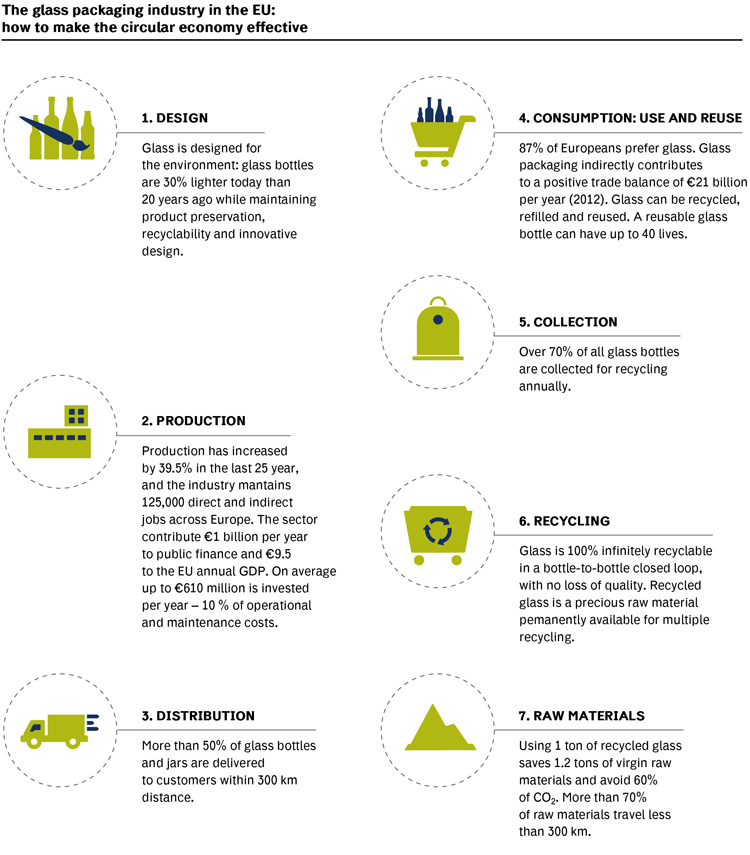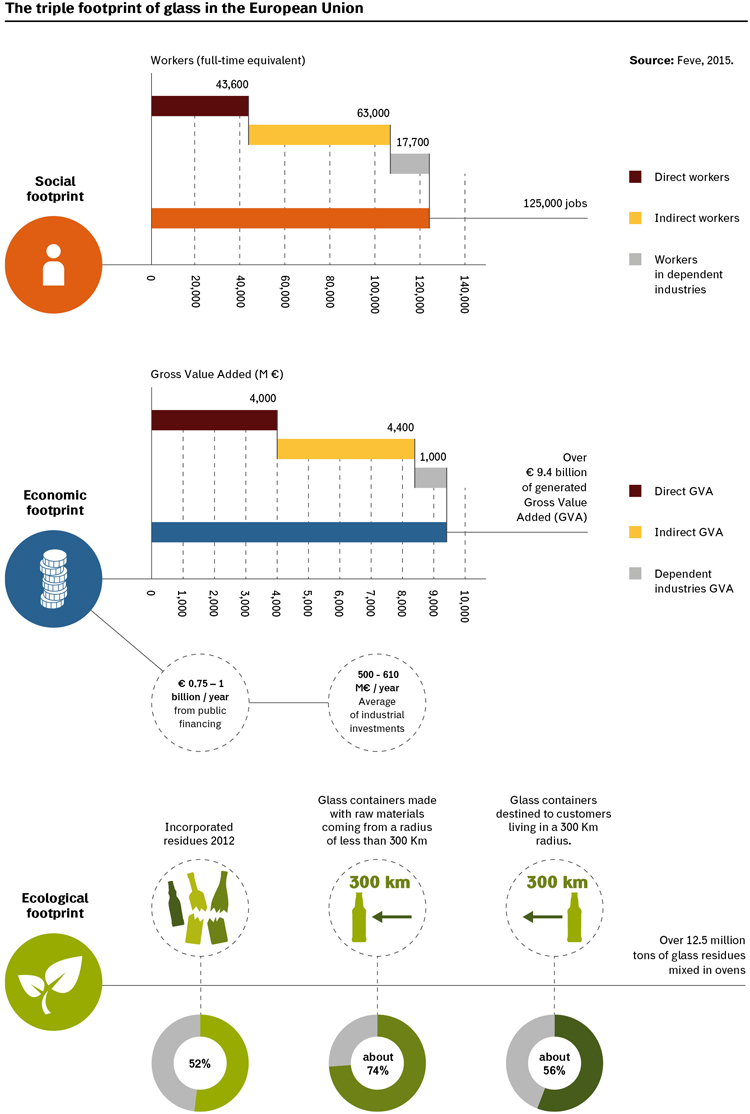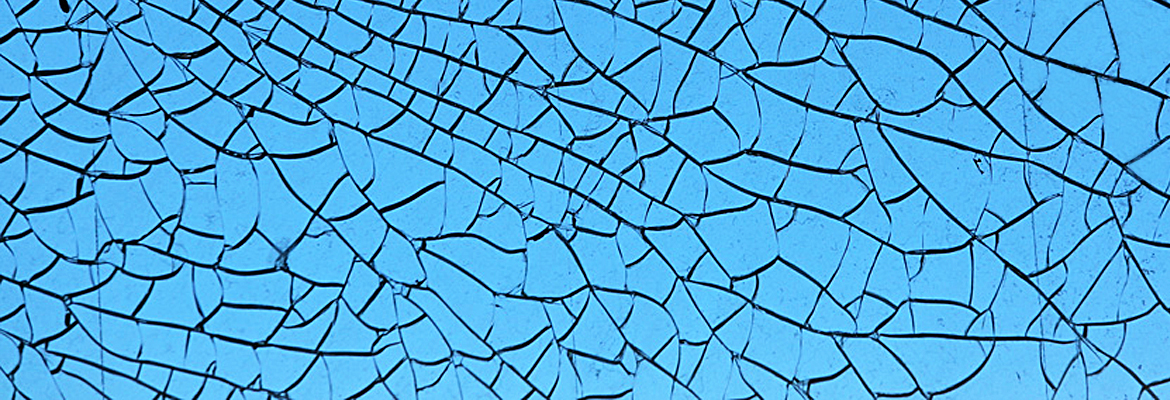Glass has a very ancient origin. It seems that the first people who produced it were the inhabitants of Mesopotamia, although the oldest fragments that we know of are from Egypt dating from 1500 b.C.
Although very unlikely that a glass could travel so far, remaining intact all the time, the material could, from cycle to recycle, pass through centuries and turn into a glass again, a bottle or a jar exactly like the first day it was produced.
Were we to look for the perfect element that represents the concept of circular economy, we could not find a better one than glass.

We only need to quote the most recent data to understand how recyclable this material is. In 2012 the recycling rate in Italy reached 71%, higher than the European average (70%). For this reason, our country is the third in Europe after Germany and France. Every year we collect 1,673,000 tons of glass to be recycled and we surpass the European average even for residues used in bottles and jars, with 59% compared to 52% for Europe.
These figures were underlined by a recent study – “The contribution of the industry of glass containers in Italy in social, economic and environmental terms” – carried out by Ernst&Young in the main European markets on behalf of Feve, the European Federation of glass container producers, and presented by Assovetro, the national association of glass businesses, a member of Confindustria.
In total, the companies that produce glass containers in Italy are 12, with 27 producing plants distributed along the peninsula. The North however presents the highest concentration: Lombardia is the region with the most productive unit (five). In 2012, the production of glass containers amounted to 3,400,000 tons, equivalent to a daily production of 9,600 tons of bottles and vases. Total consumption amounted to 3,562,000 tons and the products released for consumption on the national territory amounted to 2,212,000 tons: these data show the importance of the sector’s indirect exports.
How does this translate in economic terms? “The supply chain of glass containers in its totality” states the study “contributes 1.4 billion euros to Italian GDP. The industry, for its part, generates more than 700 million euros of value added, to which we need to add almost the same amount (705 million) coming from the whole of the supply chain. As far as exports are concerned, glass containers follow the flow and volumes of the products they contain, in particular food and beverages. In 2012, the trade balance of products packaged in glass was positive, reaching over 5 billion euros. In terms of investments, in the last ten years the industry has mobilized an average of 89 million euros per year, 70% of which was used to make the plants greener, in particular installing mechanisms that could drastically reduce emissions and favour energy efficiency.”
“This research”, explains Franco Grisan, president of the glass container section of Assovetro “shows the importance of the Italian industry of glass containers, not only in relation to the national economy, but also in the search for ever better and more efficient environmental standards. It is important that production plants are present on the whole of the Italian territory, thus generating value from North to South in terms of jobs, better proximity to the respective food industries and recycling of glass from used containers”.
In addition to this, in terms of sustainability the glass industry is practically a local phenomen, or almost: thanks to a homogenous distribution of the producing plants across the territory, as explained by the study presented by Feve and Assovetro, alongside a production almost exclusively destined to the national market (88%) and the plants’ proximity to their customers (47% live in a 300 kilometer radius). Even raw materials do not have to travel far, as 81% of them are produced locally.
The glass industry also offers an important contribution to green jobs: the whole glass supply chain employs 20,200 people. And the snapshot of the sector, widened to a European level, further shows the opportunities offered by the circular economy of glass. We are talking about 160 plants in 23 countries, which provide work for 124,300 people, of which 46,000 in a direct form. All this produces a total of 40 billion bottles and jars, i.e. 20 Mt, 70% of which comes from recycled material. In financial terms, we are talking about a sector that, in the 27-member-Europe, every year invests between 500 and 600 million euros, of which only 10% are for operational and maintenance costs.
Furthermore, the investments carried out in the period 2003-2012 mostly went on system upgrades, such as the replacement in ovens of traditional fuels like gas. They were also used for water filtering systems, which translated into better energy efficiency and fewer CO2 emissions.
The glass container sector has generated a very important indirect contribution to the general economy of the Union. Suffice it to say that in 2012 the products that use glass packaging registered a positive trade balance of over 21 billion euros per year.

But glass is no longer solely an economic factor. Maybe because it concretely synthesizes the concept of “transparency”, maybe because information now reaches all citizens, people love glass. In a recent survey, carried out in 11 European countries including Italy, by InSites Consulting on behalf of Feve, according to Italian parents safety is the major concern and glass guarantees it better than any other container.
In the survey, “79% of interviewees state that they prefer food for children in glass and 62% of them avoid buying children food in plastic or materials other than glass”.
“Glass” the study explains “is perceived by Europeans as the packaging material ‘exempt from dangerous migrations’; eight out of ten consumers – over nine in the case of Italy – believe that the interactions of chemical substances are a danger to health. According to the survey, Italians prefer glass to all other materials, both for food (consensus of 53% of interviewees) and beverages (76%).”
Info



